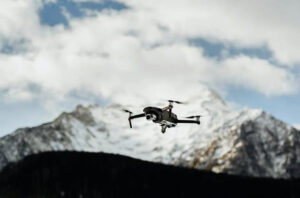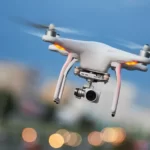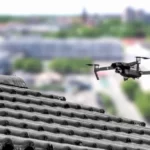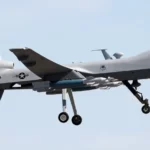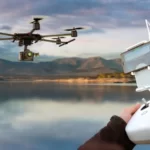Drone owners might wonder how far they can fly their machines after using them to fly over their own properties a few times. They might be able to fly their drones down the street, but can they get fined for flying one over a neighbor’s property? Is it illegal to fly a drone over private property?
Just keep reading, this post will reveal the solution.
Table of Contents
Which Laws Regulate Drone Use For Recreation?
It can be difficult to determine which regulations and laws apply to drone flying for leisure. According to federal law (the Air Commerce Act), the U.S.U.S. government has sole authority over airspace that is navigable and open to the general public. To ensure public safety, states also make and enforce criminal laws, which have an impact on how much air space a landowner or tenant can control. Then there are local government ordinances that make use of zoning, property, and their own criminal laws to uphold public peace and order.
Which of these describes the obnoxious drone that is flying over your property? It’s unlikely that the federal government will intervene and bring a criminal case against the drone operator even if they are breaking the law. State or local officials are more likely to respond to your inquiry. Depending on the circumstance, the operator may be invading your privacy or trespassing, both of which may be against a state’s criminal laws or local ordinances.
Can A Drone Be Flew Over Private Property?
There are no federal laws prohibiting flying a drone over private property, so you can generally do so. You can only legally fly a drone in uncontrolled airspace below 400 feet above the ground because the FAA controls the airspace above that height. Owners of private property do, however, have legal authority over it, and some local and state laws forbid the use of drones over private property.
Read More: Can I Fly a Drone in My Neighborhood?
The Federal Aviation Administration (FAA) Airspace
Safety in civil aviation is the responsibility of the Federal Aviation Administration or FAA. It controls the airspace over the United States, and because it is a federal agency, its laws are superior to those of every state and local government in the country.
According to the FAA, there are two types of airspace: controlled and uncontrolled. Uncontrolled airspace is 400 feet or less from the ground, while controlled airspace is above 400 feet.
The Federal Aviation Administration (FAA) Airspace
Some of the FAA laws and regulations for recreational drone pilots are:
- keeping your line of sight while operating your drone.
- You should only use your drone for fun and not for profit.
- If your drone has recommended lights, avoid flying it at night.
- Before taking to the skies, always register your drone.
- Unless certified by a community-based organization, drone weight cannot exceed 55 pounds.
- Do not fly your drone over people or moving vehicles.
- Do not fly your drone close to emergency response operations.
- Keep your drone away from crewed aircraft.
Some of the FAA laws and regulations for commercial drone pilots are:
- An FAA-issued Remote Pilot Certificate is required to fly your drone for payload purposes and to become a commercial drone pilot.
- Fly your drone at a speed that is lower than 100 mph.
- Only operate your drone in Class G airspace.
- Always allow crewed aircraft to pass.
- Except in sparsely populated areas, avoid flying your drone from a moving vehicle.
Ownership Of The Airspace By Property Owners?
The UAS (Unmanned Aircraft System) is now officially covered by federal law, according to the FAA. Except for restricted areas, UAS can fly almost anywhere. According to FAA, all airspace outside of enclosed spaces is permissible for drone use. As a result, since it is navigable airspace, the drone that is flying over your yard or another private area may do so. In other words, unless a drone is flying low, is causing a nuisance, or is being reckless, private property owners cannot interfere with it. Airspace does not belong to the property owners.
Can Drones Take Pictures Of Private Property?
If the flight height is within the permitted range, drones may fly in the airspace over privately owned property, according to FAA regulations. However, you must first check your local state’s privacy laws if you attempt to take photos of private property. If you don’t have the owner’s permission, you shouldn’t take pictures of private property.

Can You Be Sued For Flying A Drone Over Private Property?
You are free to use a drone over private property without breaking any federal laws. Only the altitude at which you are flying is subject to restriction. It can’t go over 400 feet. However, some US states have enacted local legislation that limits the use of drones in residential areas. As a result, there is a possibility that you could face legal action if you use your drones in such places. As a result, you should always double-check to make sure that there are no such limitations on the private property where you are flying the drone.
But it’s not okay to fly a drone at a low altitude where it might obstruct someone or their property or possessions.
What Should I Do if My Neighbor Flys A Drone Over My Property?
The neighbor may be able to bring a criminal or civil complaint if a drone operator flies a drone over their home. Before flying a drone for fun, the neighbor should check any local laws or ordinances.
The next-door neighbor may lodge a complaint if local or state laws forbid drones from flying over or over residential areas or private properties. Depending on the laws that were broken, the local law enforcement organization may then fine the drone operator and perhaps even seize the drone.
The neighbor still has a few options for punishing the drone operator because there are no specific laws prohibiting drone operations in residential areas. While the laws vary in each state, the neighbor may file a lawsuit against the drone operator claiming that the drone:
- Invaded their right to privacy
- Trespassed on their property
- Created a nuisance
Evidence, such as pictures or videos of the drone flying over private property, is frequently needed in civil lawsuits. To confirm the drone’s flight path, the drone operator will most likely also have GPS information and other flight data.
Is It Permitted To Shoot Down A Drone While It Is Over A Private Area?
Drones can occasionally annoy owners of private property. But if someone tries to shoot down the drone, they might be subject to both legal and criminal consequences. Therefore, if there is a problem, it is always preferable to request that the drone pilot not fly the aircraft above a property.
The local enforcement officials in the area can be contacted if someone wants to file a complaint about the drone. The drone pilot is simple to locate. In the event that the drone pilot has broken any drone flying regulations, law enforcement officials may take the appropriate action.
Private property owners are not allowed to destroy drones that fly over their land. They are forbidden from interfering with any drone’s operation while it is in the air. They are unable to use any kind of weapon to shoot at or harm the drone. Both using nets to capture the drone and using trained birds to attack it are prohibited.
Read more about: Can I Shoot Down A Drone? Is It Legal?
How To Stop Drones From Flying Over Your House?
There are many drones with cameras. Homeowners who can show that the drone operator violated their privacy by using its camera may have a case. 24 states currently have laws related to privacy and drones.
The judge may issue a temporary restraining order to stop the drone operator from flying over the home in privacy invasion cases. Trespassing includes approaching people, animals, and even trees. The property owner may trim any tree branches that trespass over the boundary line.
The owner may claim that a drone was trespassing if it flew inside the boundaries of their property. However, most laws do not specify how much of the area above the house is included in the property’s boundaries. Photographic proof that the drone flew close to the house could support the homeowner’s claim.
The drone caused a nuisance, which is a third defense strategy. A homeowner may sue the drone operator if the noise from the drone makes it difficult for them to sleep or enjoy their property. In the event that the judge sides with the homeowner, the drone operator might be ordered to stop causing annoyance.
Some homeowners may attempt to jam the drone’s signal in addition to suing the drone operator. The act of jamming involves obstructing the radio signal between the drone and the operator. A drone is frequently programmed to return to its takeoff location or a predetermined home location when communication with the controller is lost. However, using a jammer purposefully to obstruct legal radio communication is illegal under federal law.
Conclusion
In most places, it is legal to fly a drone over private property, and you don’t need anyone’s permission to do so. However, due to privacy concerns, some states and localities have laws that forbid drones from flying over private property. But in the US, these laws are only present in a small number of states and communities.
However, because property owners are concerned about their privacy, drone pilots should avoid flying too close to private property.

